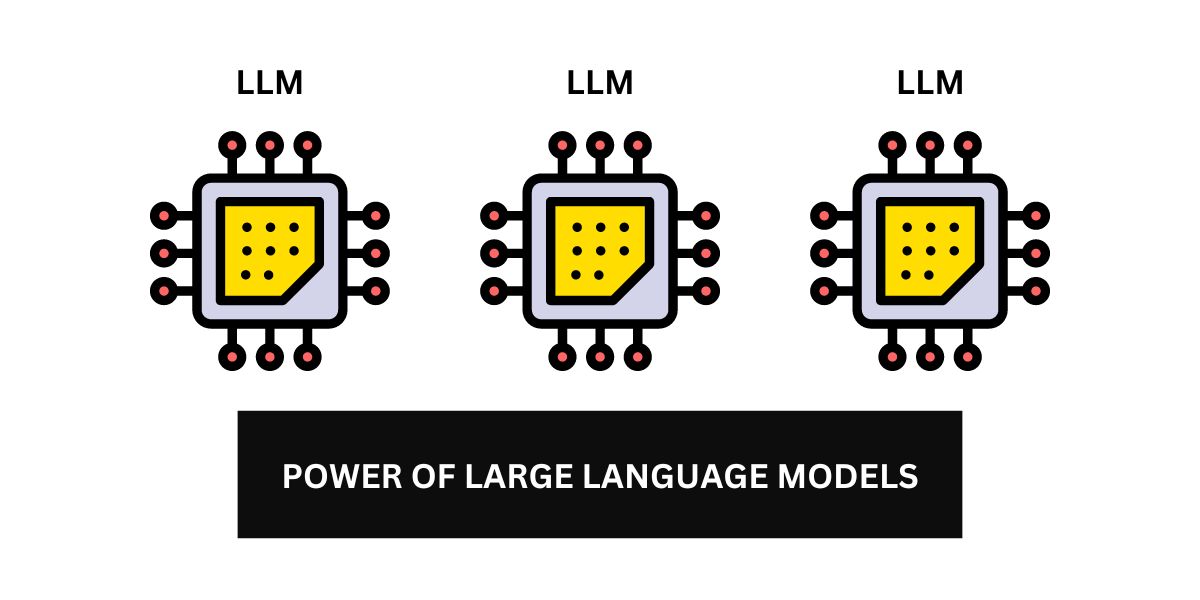Understanding the Role of Large Language Models (LLMs)
Exploring the Basics of LLMs
Large Language Models (LLMs) are AI systems that can comprehend and generate human language, utilizing sophisticated algorithms and massive datasets. They excel in natural language processing, enabling them to understand and respond to complex queries with high accuracy. LLMs like GPT-3 from OpenAI are at the forefront of this technology, showcasing the potential of large language models in transforming various industries.
The essence of LLMs lies in their ability to generate human-like text outputs, making them valuable for tasks such as automated content creation, customer service chatbots, and personalized recommendations. These models leverage machine learning principles to continuously improve their performance, showcasing the power of AI-driven solutions in enhancing user experiences and operational efficiency.
Applications of LLMs in AI and Chatbots
Large language models play a crucial role in revolutionizing the field of artificial intelligence, particularly in chatbot development. By integrating LLMs like ChatGPT into chatbot systems, businesses can harness the generative capabilities of these models to deliver more engaging and context-aware interactions. This integration results in chatbots that can understand and respond to user inputs more effectively, enhancing the overall user experience. Moreover, LLMs enable chatbots to handle a wide variety of tasks with superior performance, ranging from answering customer queries to providing real-time support. These models can adapt to different contexts and generate responses that mimic human language, significantly improving the efficiency and accuracy of AI-powered chatbot services.
The Impact of LLMs on Data Privacy
As large language models continue to evolve and become more prevalent in various applications, concerns surrounding data privacy and security have become paramount. The extensive datasets used to train LLMs may contain sensitive information, raising questions about the potential misuse or unauthorized access to personal data. To address these challenges, developers and organizations must prioritize data protection measures and implement robust security protocols to safeguard user information. By ensuring transparent data handling practices and incorporating privacy-enhancing technologies, businesses can leverage the benefits of large language models while upholding data privacy standards and building trust with their customers.
Integration of AI in Chatbot Development
Utilizing AI Technologies like ChatGPT
Incorporating advanced AI technologies such as ChatGPT into chatbot development processes can significantly enhance the conversational abilities of these systems. ChatGPT, a powerful language model developed by OpenAI, leverages machine learning to understand user inputs and generate contextually relevant responses in real-time. The integration of ChatGPT enables chatbots to interpret natural language queries more accurately, leading to improved user engagement and satisfaction. By harnessing the capabilities of AI-driven solutions like ChatGPT, businesses can deliver more personalized and effective chatbot interactions, ultimately enhancing the overall customer experience.
Ethical Considerations in LLM Chatbots
As businesses increasingly rely on large language models for chatbot development, ethical considerations surrounding the use of AI technologies become paramount. It is essential for organizations to prioritize ethical design principles and transparency in how these models are utilized to ensure fair and unbiased interactions with users. By adhering to ethical guidelines and continuously monitoring the behavior of LLM chatbots, businesses can mitigate potential risks such as biased outputs or unintended consequences. Implementing ethical frameworks and responsible AI practices in chatbot development is crucial to building trust with users and fostering a positive perception of AI-driven technologies in the market.
Enhancing User Experience with LLM-AI Integration
The seamless integration of Large Language Models (LLMs) with artificial intelligence technologies has the potential to revolutionize the way businesses interact with customers through chatbots. By combining the natural language processing capabilities of LLMs with the adaptability and learning capacity of AI, organizations can create chatbots that offer personalized, contextually relevant responses to user queries. This integration not only enhances the user experience by providing more accurate and timely information but also enables businesses to streamline customer support processes and improve operational efficiency. As LLM-AI integration continues to advance, businesses can expect to see significant improvements in chatbot performance, resulting in enhanced customer satisfaction and loyalty.
Leveraging LLMs for Content Creation
The Versatility of LLMs in Generating Content
Large language models have proven to be incredibly versatile when it comes to content creation, demonstrating the ability to generate high-quality text across a variety of domains and styles. These models can produce coherent and engaging content that mimics human language, making them valuable tools for automating the writing process and scaling content production efforts. By leveraging the generative capabilities of LLMs, businesses can create a wide range of content, including articles, product descriptions, social media posts, and more. The versatility of these models enables organizations to tailor content to specific audiences and channels, driving engagement and enhancing brand visibility in the digital landscape.
Challenges and Solutions in LLM Content Generation
While LLMs offer significant advantages in content generation, they also present challenges related to content quality, coherence, and originality. Organizations need to carefully fine-tune these models and implement quality control measures to ensure that the generated content meets the desired standards and aligns with brand guidelines. To address these challenges, companies can leverage human oversight and editing processes to refine and optimize the output generated by LLMs. By combining the strengths of AI-driven content generation with human creativity and expertise, businesses can overcome challenges associated with LLM content generation and deliver compelling and authentic content to their audiences.
Exploring Potential Applications of LLMs in Content Creation
The potential applications of large language models in content creation extend beyond basic text generation to more advanced tasks such as sentiment analysis, content summarization, and personalized recommendations. These models can analyze vast amounts of textual data and extract valuable insights to inform content strategies and optimize engagement. By exploring the diverse capabilities of LLMs in content creation, businesses can develop innovative content marketing approaches that resonate with their target audience and drive meaningful interactions. As organizations continue to harness the power of LLMs for content creation, they can unlock new opportunities for content personalization, audience segmentation, and data-driven decision-making in their marketing efforts.
Exploring Novel Use Cases of LLMs Beyond Traditional Applications
Revolutionizing Chatbots in Education with LLMs
Large language models have the potential to revolutionize chatbots in the education sector by offering personalized learning experiences and adaptive tutoring capabilities. By integrating LLMs into educational chatbot systems, institutions can provide students with tailored support, interactive lessons, and real-time feedback to enhance their learning outcomes. These AI-driven chatbots can adapt to individual learning styles and preferences, delivering customized content and educational resources based on student interactions. By harnessing the power of LLMs in education, institutions can create immersive and engaging learning environments that cater to the diverse needs of students and promote continuous learning and skill development.
LLMs in Graduate Research and Beyond Traditional Teaching
In the realm of graduate research, large language models play a pivotal role in facilitating data analysis, literature reviews, and knowledge synthesis processes. Researchers can leverage LLMs to analyze scholarly articles, generate research proposals, and explore new avenues of investigation, expanding the horizons of traditional research methodologies. Moreover, LLMs offer unique opportunities for graduate students to enhance their writing skills, engage in collaborative research projects, and contribute to academic discourse in innovative ways.
By incorporating LLMs into graduate research and beyond traditional teaching practices, universities can empower students with advanced AI tools and methodologies that support their academic and professional development. The rapid evolution of large language models has paved the way for groundbreaking innovations in AI and chatbot technology, driving unprecedented growth and opportunities across various industries. By harnessing the power of LLMs and integrating them into business strategies, organizations can stay ahead of the curve and unlock new avenues for growth, innovation, and customer engagement.
Frequently Asked Questions (FAQ)
What are chatbots?
Chatbots, also known as AI chatbots or AI-driven chatbots, are computer programs designed to simulate conversation with human users, especially over the internet.
How do large language models (LLMs) work?
Large Language Models (LLMs) like GPT-3 use advanced machine learning techniques to process and analyze human language data, enabling them to generate coherent and contextually relevant text outputs.
What is the difference between chatbots and LLMs?
Chatbots typically focus on specific tasks or interactions, while Large Language Models have a broader scope and can handle a wider variety of tasks due to their versatility and powerful language processing capabilities.
How can AI revolutionize content creation?
Artificial Intelligence (AI) and Large Language Models have the potential to revolutionize content creation by automating processes, improving efficiency, and generating high-quality outputs at scale.
Why is leveraging LLMs beyond chatbots important?
By exploring the potential of Large Language Models beyond traditional use cases, organizations can uncover new opportunities for innovation and efficiency in various industries.
What is ChatGPT and how does it enhance content creation?
ChatGPT is an example of a specialized LLM that focuses on chatbot interactions, providing a platform for engaging conversations and creative content generation.
How can businesses make the most of LLM outputs?
Businesses can use the outputs generated by Large Language Models (LLM) for a wide variety of tasks, including content creation, data analysis, customer support, and more.
What role does AI play in enhancing human language understanding?
AI plays a significant role in enhancing human language understanding by providing tools and models that can process, analyze, and generate text with increasing accuracy and context awareness.

